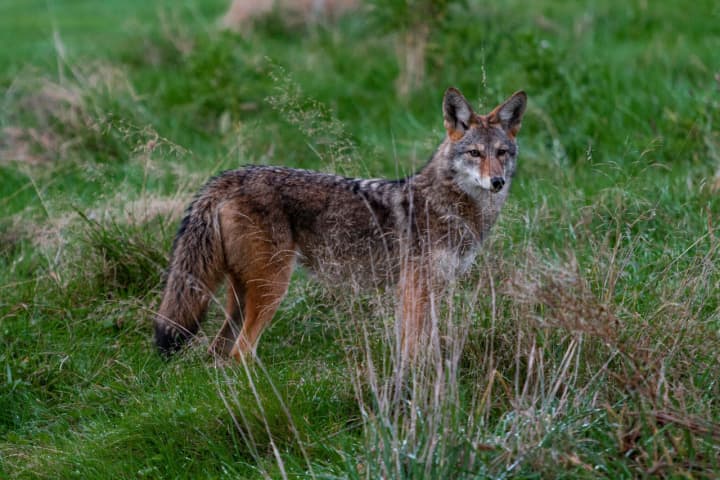For coyotes, February marks the beginning of mating season, which lasts between four and six weeks, peaking late in the month and early in March, according to animal experts, who noted that it varies year-to-year depending on weather, prey, quantity, and other mitigating factors.
Researchers said that the season begins with mating, followed by pup raising, and then dispersal, leading to the rise in sightings in recent weeks.
According to the DEC, coyotes can be found in habitats throughout the state, from rural farmland and forests to green spaces in suburban and urban areas.
For the most part, coyotes avoid contact with people; however, conflicts with people and pets may occur as coyotes tend to be more territorial during breeding and pup-rearing seasons in the spring and summer.
Officials warned that if coyotes learn to associate food sources such as garbage or pet food with people, the animals may lose their natural fear of humans, increasing the potential for close encounters or conflicts.
“This is the time of year when New York's resident coyotes breed and set up dens for pups that will arrive in the spring," DEC Commissioner Basil Seggos said.
"While conflicts with people and pets are rare, New Yorkers should remain alert and follow DEC's common-sense guidelines to minimize the risk for potential conflicts with coyotes.”
To avoid any conflict with coyotes, the DEC advised New Yorkers to take certain steps that include:
- Do not feed coyotes;
- Do not leave food outside. Pet food and garbage attract coyotes and other wildlife and increase risks to people and pets;
- Do not feed pets outside;
- Prevent access to garbage;
- Fence or enclose compost piles;
- Eliminate availability of birdseed, as concentrations of birds and rodents that come to feeders can attract coyotes;
- Do not allow coyotes to approach people or pets. If you see a coyote, be aggressive in your behavior: stand tall and hold your arms up or out to look as large as possible. If a coyote lingers for too long, make loud noises, wave arms, and throw sticks and stones;
- Teach children to appreciate coyotes from a distance;
- Do not allow pets to run free. Supervise outdoor pets to keep them safe from coyotes and other wildlife, especially at sunset and at night - Small dogs and cats are especially vulnerable;
- Fence yards to deter coyotes. The fence should be more than four feet tall, and tight to the ground, preferably extending six inches below ground level;
- Remove brush and tall grass from around homes to reduce protective cover for coyotes. Coyotes are typically secretive and like areas where they can hide;
- Ask neighbors to follow these steps to prevent coyote conflicts.
Click here to follow Daily Voice Pleasantville and receive free news updates.


